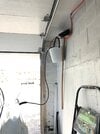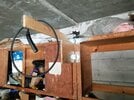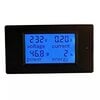My Long Range Y is coming shortly (some time in March supposedly), and I'm now looking at where to place the charger inside my garage. I have a couple places in mind, but curious for those with experience charging and plugging/unplugging cords and moving them back and forth would recco.
Below is the sketchup of the garage and where the Telsa will be parked. I will be putting a panel in the area noted with the panel box below (the main panel is below/behind that area so easy enough).
My father in law is thinking to put the EV charger in place 1. But I'm not a fan of that because I keep imagining hauling the cable to the other side of the garage and over to charge the back end of the Tesla, then having to recoil it every morning sort of thing and it would take most if not all of the cable to get over there. He likes it there simply because there is less wire/conduit to pull.
I like place 2 because it it much closer to the charge port, and if I end up going with two EV's and only one charger, both ports are very close to the charger itself so not much cable to pull and recoil.
Thoughts?

Below is the sketchup of the garage and where the Telsa will be parked. I will be putting a panel in the area noted with the panel box below (the main panel is below/behind that area so easy enough).
My father in law is thinking to put the EV charger in place 1. But I'm not a fan of that because I keep imagining hauling the cable to the other side of the garage and over to charge the back end of the Tesla, then having to recoil it every morning sort of thing and it would take most if not all of the cable to get over there. He likes it there simply because there is less wire/conduit to pull.
I like place 2 because it it much closer to the charge port, and if I end up going with two EV's and only one charger, both ports are very close to the charger itself so not much cable to pull and recoil.
Thoughts?








